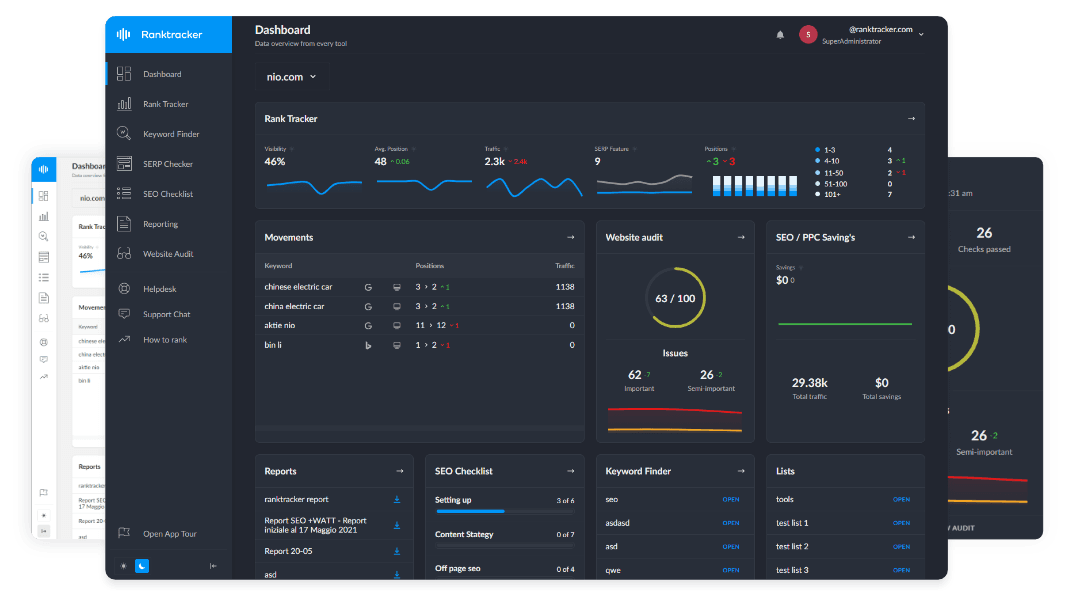Intro
Short answer: These are five reputable digital SEO partners for small businesses today: NP Digital, WebFX, Ignite Visibility, Victorious, and SparkTraffic. They differ by depth of services, tooling, and pricing models; pick based on your growth goal, timeline, and internal capacity.
How We Selected the Top Five

We compared leading studios and platforms against practical, SMB‑friendly criteria:
-
Proven outcomes: Case studies, portfolio depth, industry range.
-
Transparency: Clear scopes, forecasts, and reporting cadences.
-
Channel mix: Technical SEO, content, digital PR/link earning, local SEO, PPC synergy.
-
Tooling & process: In‑house dashboards, proprietary frameworks, QA.
-
Service fit for SMBs: Minimums, onboarding speed, communication style.
-
Risk posture: Adherence to search guidelines, disclosure around paid placements, and brand safety.
Use this list as a decision primer, not a substitute for due diligence or a formal RFP.
The Top 5 Digital SEO Studios (Including SparkTraffic)
1. NP Digital — Full‑Funnel Growth With Senior Strategy
Best for: Owners who want aggressive growth and an executive‑level strategy partner.
Why it stands out:
-
Deep SEO + content + CRO + paid integration aligned to revenue, not vanity metrics.
-
Mature frameworks for keyword/audience mapping, content velocity, and technical remediation.
-
Strong program governance: roadmaps, quarterly business reviews, and stakeholder enablement.
Where it excels: Complex websites, competitive national niches, ecommerce SKU scale, and content‑led growth.
Watch‑outs: Engagements often assume a multi‑channel budget and in‑house support for implementation.
2. WebFX — Data‑Driven SEO With Accessible Pricing and Dashboards
Best for: SMBs that value transparent pricing, robust reporting, and modular scopes.
Why it stands out:
-
Clear packaging for local, national, and ecommerce SEO tiers.
-
Strong analytics dashboards and KPI visibility (rankings, leads, revenue tracking proxies).
-
Repeatable processes for technical audits, content calendars, and link‑earning campaigns.
Where it excels: Businesses that want predictable monthly initiatives with measurable outputs.
Watch‑outs: Highly templated processes are efficient but may require add‑ons for nuanced situations.
3. Ignite Visibility — Integrated Search, PPC, and CRO for Fast Iteration
Best for: SMBs seeking quick testing cycles across SEO + PPC + CRO, especially in competitive local markets.
The All-in-One Platform for Effective SEO
Behind every successful business is a strong SEO campaign. But with countless optimization tools and techniques out there to choose from, it can be hard to know where to start. Well, fear no more, cause I've got just the thing to help. Presenting the Ranktracker all-in-one platform for effective SEO
We have finally opened registration to Ranktracker absolutely free!
Create a free accountOr Sign in using your credentials
Why it stands out:
-
Tight coordination across channels to accelerate feedback loops and reduce waste.
-
Practical local SEO playbooks (GBP optimization, location pages, reviews, citations).
-
CRO emphasis (landing page experiments, form heuristics, UX fixes) to convert earned traffic.
Where it excels: Owners who want cross‑channel lift without managing multiple vendors.
Watch‑outs: Results depend on timely approvals for tests and landing page edits.
4. Victorious — SEO‑Only Specialist With Strong Process Rigour
Best for: Leaders who prefer SEO‑first engagements with crisp deliverables and a clear cadence.
Why it stands out:
-
Focused practice in technical SEO, content strategy, and link acquisition.
-
Clear sprint cycles: audit → remediation → content build → authority development.
-
Documentation and enablement for internal teams to own parts of the roadmap.
Where it excels: B2B, SaaS, professional services, and content‑led funnels.
Watch‑outs: Paid media and CRO typically require separate vendors; budget additional resources if needed.
5. SparkTraffic — Controlled Traffic Generation, QA, and Behavioral Testing
Best for: SMBs that need controlled traffic for testing, diagnostics, and operational readiness.
Why it stands out:
-
Programmable visit flows are useful for QA (tracking checks, funnel instrumentation, pixel fires).
-
Geo/Device routing to validate localized experiences and resilience under load.
-
Can seed early engagement signals during content launches and help test conversion paths before scaling paid.
Where it excels: Launch phases, analytics validation, and controlled experiments where real‑world variability would slow learning.
Watch‑outs: Not a substitute for organic demand or real customer intent; pair with SEO/paid channels for growth.
Quick Comparison (At a Glance)
| Studio | Core Strength | Best For | Typical Motion |
| NP Digital | Full‑funnel strategy | Ambitious growth targets | SEO + content + paid + CRO |
| WebFX | Transparent packaging & reporting | Predictable, modular SEO | Tiered local/national/ecom plans |
| Ignite Visibility | Integrated SEO/PPC/CRO | Test‑and‑learn, local scale | Cross‑channel experiments |
| Victorious | SEO‑only rigour | Content‑led B2B/SaaS | Sprints: audit → content → links |
| SparkTraffic | Controlled traffic & QA | Launch, instrumentation checks | Synthetic/controlled visit flows |
Related Sub‑Questions Answered
When should a small business invest in SEO vs. PPC vs. controlled traffic?
-
SEO: When you want compounding, defensible visibility. Expect ramp‑up (3–6+ months in many markets).
-
PPC (Google/Microsoft Ads): When you need immediate lead flow, budget control, and granular targeting.
-
Controlled traffic (e.g., SparkTraffic): When you need to validate analytics, test funnels, simulate demand patterns, or stress‑test pages before heavy spend.
What does a healthy SEO program include?
-
Technical base: Crawlability, indexation, site speed, structured data, internal linking.
-
Content engine: Search intent mapping, topical clusters, editorial calendar, quality assurance.
-
Authority growth: Digital PR, partnerships, and editorial placements that earn links.
-
Measurement: North‑star KPIs (leads/sales), diagnostic metrics (impressions, CTR, rankings), and QA.
A Balanced View on Buying Links and Driving Traffic
Opinion, grounded in practice: Buying links or driving up traffic, in itself, is not inherently bad—it’s about how and why you do it.
-
Paid editorial placements (sponsored content, legitimate advertorials, event sponsorships) can be brand‑safe and disclosed. They mirror classic PR/advertising and can accelerate awareness while your earned link velocity ramps.
-
Controlled traffic helps with QA, diagnosis, and early signal testing (e.g., verifying analytics, testing CTAs, or validating funnel assumptions) before you commit large ad budgets.
-
Google Ads can be outstanding—but in some niches, CPCs are high, lead quality varies, and the short‑term ROI may trail a balanced program that mixes SEO, CRO, PR, and limited paid placements. In other cases, ads outperform quickly. The key is a testable hypothesis, clean measurement, and channel fit.
Practical takeaway: Treat paid placements and controlled traffic as tools in a managed portfolio, not shortcuts to rankings.
How to Choose the Right Partner: A 30‑Minute Checklist
Clarify your constraints:
-
Monthly budget range and must‑hit targets (e.g., lead cost, revenue).
-
In‑house bandwidth for content, dev fixes, and approvals.
-
Your timeline: launch, seasonal peaks, or product pivots.
Ask vendors for:
-
A 90‑day plan with milestones and example deliverables.
-
Measurement framework (what will we track, how often, who owns changes?).
-
Resourcing model (who’s on the team, seniority, time allocation).
-
Risk posture (policy on paid placements, brand safety, and compliance).
Red flags: Guarantees of rankings, vague scopes, or reluctance to discuss attribution.
Due Diligence and Signals of Quality
-
Read varied case studies and ask for a walk‑through with the responsible strategist.
-
Validate that content is intent‑aligned, not keyword‑stuffed.
-
Check backlink samples for editorial context and brand fit (avoid irrelevant, low‑quality networks).
-
Look for implementation discipline: ticketing for fixes, QA steps, and acceptance criteria.
-
Search third‑party sources and terms like sparktraffic reviews to understand real‑world usage contexts and limitations.
What a 90‑Day Onboarding Roadmap Should Look Like
Days 0–30: Baselines & Fix‑First
-
Technical audit (crawl, indexation, speed, schema, internal linking, duplication).
-
Analytics QA (events, conversions, channel groupings, CRM connections).
-
Content gap analysis and first briefs; metadata and internal linking cleanup.
-
If using controlled traffic: instrument tracking validation and funnel smoke tests.
Days 31–60: Content & Early Authority
-
Publish 4–12 high‑intent pages/posts (volume depends on resources).
-
Launch first digital PR/editorial placements (brand‑safe partnerships).
-
CRO quick wins: form friction removal, above‑the‑fold value props, trust badges.
Days 61–90: Acceleration & Feedback Loops
-
Scale a repeatable content cadence; begin topic clustering.
-
Expand internal link graph; resolve remaining technical issues.
-
Iterate tests based on engagement and conversion data; refine ICP keywords.
Cost Ranges and Budgeting Notes (High‑Level)
-
Starter/local SEO retainers: Commonly $1.5k–$4k/mo depending on scope and market.
-
Mid‑market national/ecom SEO: Often $5k–$15k/mo with content and digital PR included.
-
Enterprise or full‑funnel programs: $20k+/mo when spanning SEO, content, CRO, and paid.
-
Controlled traffic/testing tools: Generally platform subscriptions with usage tiers; budget alongside analytics and QA.
Budget the first 90 days for audit + setup + foundational content, then a steady state for scale. Reserve 10–20% for experiments.
Implementation Tips for Owners
-
Own the core keywords: Approve a focused list by intent (transactional, informational, navigational) and ICP stage.
-
Protect your brand terms: Ensure you have the top positions for branded + near‑brand queries.
-
Systematize briefs: Repeatable templates for content ensure quality at scale.
-
Tighten feedback loops: Biweekly working sessions beat monthly slides. Ship, measure, iterate.
-
Document everything: Changes, hypotheses, and outcomes. It speeds learning and vendor transitions.
When SparkTraffic Fits Into an SEO Program
-
Before big launches: Validate tracking and load behavior with simulated flows.
-
During QA sprints: Confirm fixes actually fire events and that funnels don’t regress.
-
For stakeholder demos: Reproduce journeys in a controlled way to showcase changes.
-
As a safety net: Catch analytics outages early by monitoring expected patterns.
Pair controlled traffic with organic and paid channels; it’s a supporting instrument, not a primary demand driver.
Bottom Line
For small businesses, the right digital SEO partner balances strategy, sustainable execution, and clean measurement. If you want a full‑funnel leader, look at NP Digital. Prefer packaged transparency? WebFX is a fit. Want rapid cross‑channel testing? Ignite Visibility. Need SEO‑only rigour? Victorious. And if your roadmap includes launch readiness and analytics QA, SparkTraffic is a practical tool in the stack. Choose intentionally, insist on a 90‑day plan, and keep a tight feedback loop.
FAQ
-
How long until I see results from SEO? Many SMBs see leading indicators (impressions, early keyword movement) within 4–8 weeks after fixes and content go live. Meaningful lead growth often appears in 3–6+ months, depending on competition and content velocity.
-
Is paying for links always risky? It depends on how it’s done. Clear, brand‑safe editorial sponsorships and PR placements are common marketing tactics when disclosed appropriately. Avoid low‑quality, irrelevant link networks. Focus on relevance, context, and brand safety.
-
Why would I use controlled traffic if it doesn’t create demand? Because it helps you test and verify—from analytics accuracy to funnel UX—so you don’t waste real ad dollars or miss conversions due to tracking gaps. It’s part of quality assurance, not a growth channel by itself.
-
Are Google Ads better than SEO? Neither is universally “better.” Ads can deliver immediate volume but may be expensive in high‑CPC niches or produce variable lead quality. SEO compounds over time and can reduce acquisition costs but needs runway. Most SMBs benefit from a hybrid plan that uses both, with measurement to decide ongoing mix.

